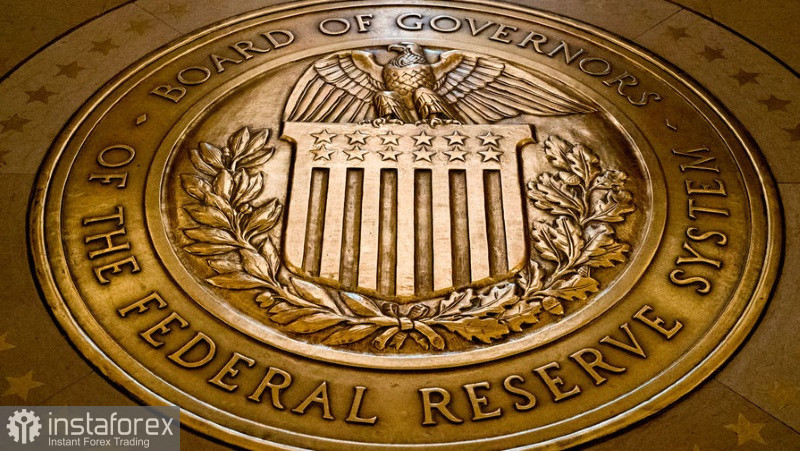The euro managed to return to the rather important level of 1.0335, which will allow the upward trend to continue, especially amid increased demand for risky assets, which was fueled by the statements of Federal Reserve policymakers. But despite the dovish statements, some Fed officials believe that the regulator needs to maintain its hawkish stance.

Yesterday, the president of the Federal Reserve Bank of Kansas City, Esther George, pointed out in an interview that spare savings of American households will help protect them in the near future, when the economy starts to face significant problems. Esther also noted that higher interest rates are still needed to reduce spending and return inflation to the central bank's target level, clearly hinting that she supports more increases.
George said that some savings are concentrated in wealthier households who tend to spend a smaller share of their wealth, which might not provide much of an additional boost to spending. "However, if those savings are spread more evenly across the population, including households with a higher propensity to spend out of their wealth, then the effect on the persistence of consumption is likely to be larger," she said. Therefore, she spoke in favor of higher interest rates despite the ongoing situation in the economy. "While high savings is likely to provide momentum to consumption and require higher interest rates, it's certainly positive that we see that these households are wealthier, less financially constrained and better insured. But that said, reduced inflation will mean we have to incent saving over consumption," Esther George added.
Earlier, the Fed raised interest rates by 75 basis points for the fourth straight time this month, bringing the benchmark target rate to 4%. Today, the Fed is set to release the minutes of its November meeting. Investors will be looking for answers to whether the central bank will soften its policy, which has been discussed by many Fed officials lately, or continue to stick to its policy and continue to hike interest rates aggressively. No matter what traders may find in the minutes, it is unlikely to support the US dollar. USD has been struggling lately due to higher risk appetite among market participants.
As noted above, statements from policymakers have contributed to the situation. Recently, San Francisco Fed President Mary Daly and Cleveland's Loretta Mester said during separate remarks that inflation remains too high and policymakers still have a long way to go before ending their rate hike campaign. However, both stressed that policymakers now need to be very judicious in setting future policy. "I think at the next meeting we can lower the rate from 75 points, to 50, and I have no problem with that," Mester said in an interview with CNBC. She added that policy was entering a new cadence and rates have just entered restrictive territory, where they weigh on the economy.
Investors are expecting the Fed to raise rates by half a percentage point at its December 13-14 meeting, and the Fed funds rate is expected to peak at about 5% next year. Afterwards, the Fed will stop the tightening cycle.
On the technical side, the situation is developing in favor of EUR/USD bulls. It is obvious that demand for risky assets has returned after the Fed representatives called for a slower pace of rate hikes. To rise, the pair needs to return above 1.0330, which will push the instrument towards 1.0380. The pair could easily climb to 1.0430 if it breaks above this level. If the trading instrument declines and breaks through the support at 1.0220, it could then slide down to 1.0170 later, as the pair would come under increased pressure.
The pound sterling is keeping its balance even though it advanced slightly in the middle of the week. Bulls are focused on defending support at 1.1830 and regaining the resistance level of 1.1900, which limits the upside potential of GBP/USD. Only a breakout above 1.1900 will make a recovery to 1.1950 more likely. Subsequently, the pound sterling could make a strong rally towards 1.2020. If bears take control of 1.1830, the pair will come under renewed pressure. This will strike a blow to the bulls' positions and make a possible uptrend highly unlikely. A breakout below 1.1830 would push GBP/USD back to 1.1750 and 1.1650.
 English
English 
 Русский
Русский Bahasa Indonesia
Bahasa Indonesia Bahasa Malay
Bahasa Malay ไทย
ไทย Español
Español Deutsch
Deutsch Български
Български Français
Français Tiếng Việt
Tiếng Việt 中文
中文 বাংলা
বাংলা हिन्दी
हिन्दी Čeština
Čeština Українська
Українська Română
Română

